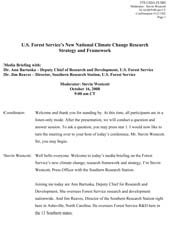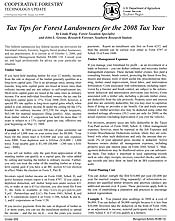Nancy Herbert,
Assistant Director| Southern Research Station
| 200 W.T. Weaver Blvd | Asheville, NC 28804
|
Restoration and Management Resources and Tools
The Mighty Oak
Oaks are members of the larger beech family of trees (Fagaceae), with its three genera: Fagus (beech trees proper), Castanea (chestnuts and chinkapins), and Quercus (oaks). There are almost 600 species of Quercus, both deciduous (leaf-shedding) and evergreen trees (such as live oaks) and shrubs.(More)Site Quality: What Will Grow Best?
Being able to determine the tree species that grow best on a particular site is a powerful tool for land managers. Conventional methods for determining site quality use tree age and height relationships that are difficult and time consuming to compute-and often result in inaccurate estimates when applied to upland hardwood forests.(More)What is Silviculture?
Silviculture is the art and science of controlling the establishment, growth, composition, health, and quality of forests and woodlands to meet the diverse needs and values of landowners and society on a sustainable basis...(More)Return of the American Chestnut?
On the same plots in the Bankhead National Forest where the SRS upland hardwoods unit tests different treatments to promote hardwood regeneration, research forester Stacy Clark has set out American chestnut and hybrid seedlings to see how well they will do under the different treatments.(More)Gypsy Moths: Balloonists and Hitchhikers
Gypsy moth (Lymantria dispar L.) is a nonnative insect introduced in 1869 into the Boston area, where some of the larvae escaped and spread into New England. The moth has since spread west and south to Ohio, Michigan, and Wisconsin, into the Mid-Atlantic States and south into Virginia and North Carolina.(More)What Do Foresters Mean By...?
Basal area is the cross-sectional area (in square feet) of the base of the tree measured at breast height (4.5 feet above the ground). For example, the basal area of a tree that measures 14 inches in diameter at breast height (d...(More)Rings and Cores
Research forester Stacy Clark uses dendrochronology-the study of tree rings-to continue a 23-year old study in Dick's Cove, in Sewanee, TN. Oaks in the cove regenerated after the Civil War, probably from harvesting used to rebuild the nearby University of the South...(More)Oaks, People, and Fire
Natural fire regimes vary significantly across the range of upland hardwood forests in the Southeast. In the Southern Appalachians, fire started by lightning is very infrequent. As we move across the map west into Tennessee, natural fire becomes more frequent-and more frequent still as we move into Arkansas and Missouri...(More)Upland Hardwood Forests in Transition
If you live in the mountain and highland areas of the South, you see oaks all around you every day. You may wonder why we would devote an entire issue of Compass to upland hardwood forests, and oak regeneration in particular...(More)Energy Efficiency
Most experts agree that forest treatments designed to improve tree health in advance of gypsy moth should be done 1 to 3 (ideally 4 to 10) years before the arrival of the pest. Stands not completely recovered from cutting operations may rebound more slowly from gypsy moth infestations...(More)Gypsy Moth Host Preferences
Favored: Species preferred or readily eaten by gypsy moth during all larval stages-most oak species, apple, basswood, river and white birch, hawthorn, hazelnut, hornbeam, serviceberry, sweetgum, willows, and witch-hazel(More)
 Southern Research Station Headquarters - Asheville, NC
Southern Research Station Headquarters - Asheville, NC
![[Images] Five photos of different landscape [Images] Five photos of different landscape](https://webarchive.library.unt.edu/eot2008/20090115213018im_/http://www.srs.fs.usda.gov/images/imstr1.jpg)






